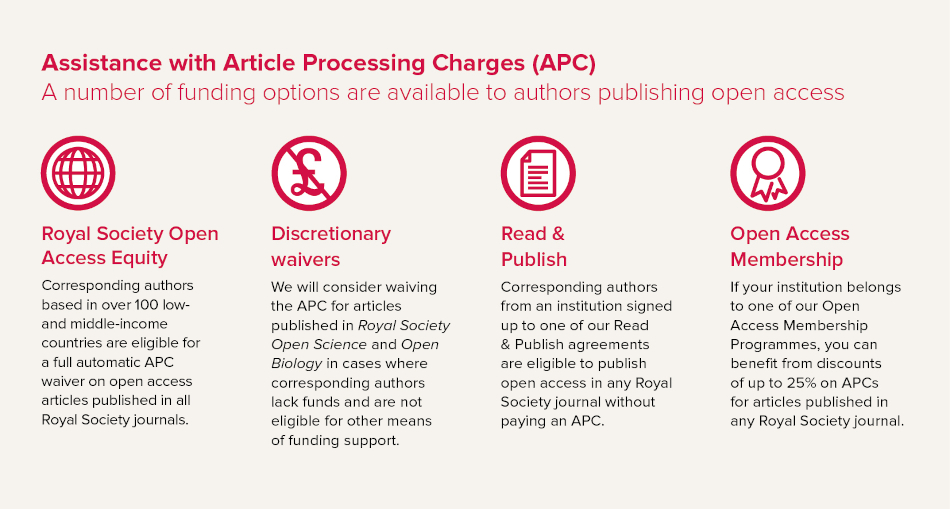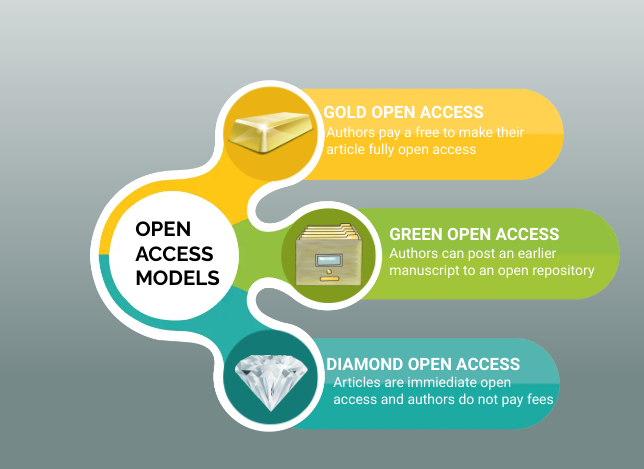Open Access Grants Funding Your Research Now!
Understanding Open Access Publishing
The traditional model of scholarly publishing, often involving hefty subscription fees for access to research papers, has created significant barriers for researchers and the public alike. Open access (OA) publishing changes this paradigm. OA journals and repositories make research articles freely available online to anyone, removing paywalls and significantly increasing accessibility. This democratization of knowledge benefits not only the public but also the researchers themselves, who see increased visibility and impact for their work.
The Value of Open Access for Researchers
Open access leads to greater citation rates for published papers. Increased visibility translates to a broader audience, leading to more opportunities for collaboration, engagement, and influence within the research community. Moreover, OA aligns with the ethical principle that publicly funded research should be publicly accessible. This increased visibility also benefits researchers seeking career advancement, strengthening grant applications and bolstering their reputation within their fields.
Securing Open Access Grants: A Roadmap
Securing funding for open access publication is often a critical step in getting your research disseminated widely. Many funding bodies now actively encourage or mandate open access publication as a condition of granting research funds. Carefully review the grant guidelines to see if there’s an OA component. Some grants specifically offer funds to cover article processing charges (APCs), which are the fees associated with publishing in many open access journals. Others may provide more general publication support that can be used towards OA publishing.
Identifying Relevant Open Access Grants
Finding appropriate funding opportunities can feel overwhelming, but several resources can streamline the search. Start with your institution’s research office; they often have databases of available grants and can provide guidance on application processes. National and international funding agencies, such as the National Institutes of Health (NIH) in the US or the European Research Council (ERC) in Europe, frequently offer grants with open access provisions. Also, explore subject-specific funding organizations, as they often have dedicated programs tailored to support OA publishing within their respective fields.
Crafting a Compelling Grant Proposal for Open Access
Your grant proposal needs to clearly articulate the importance of open access publication for your research. Highlight how OA will enhance the reach and impact of your findings, potentially leading to broader collaborations and real-world applications. Justify the costs associated with APCs, showing how they are a worthwhile investment in maximizing the dissemination of your research. Provide specific details on the chosen journal or repository and ensure the plan aligns with the funder’s OA policies.
Navigating the Open Access Landscape: Journal Selection
Choosing an appropriate OA journal is crucial. While many OA journals are reputable, some lack rigorous peer review processes. Evaluate potential journals based on factors such as their impact factor, the quality of their editorial board, their subject focus, and their APC fees. Directory of Open Access Journals (DOAJ) is a useful resource to find credible OA journals that meet specific quality standards. Remember to check the funder’s guidelines for any specific requirements or preferred journals.
Post-Publication Considerations
Once your research is published, consider further strategies to maximize its visibility and impact. Utilize social media to share your work, engage with the broader research community, and potentially attract collaborators. Ensure your research is discoverable by registering it with relevant databases and repositories, including those like PubMed or arXiv, depending on your field. Monitor how your open access publication is being cited and used, allowing you to gauge its impact and inform your future research endeavors.
Beyond APCs: Exploring Other Open Access Models
While APCs are a common feature of OA publishing, other models exist. Some journals employ a membership-based system where institutions pay an annual fee for their researchers to publish openly. Some OA repositories offer free archiving services for preprints or postprints. Exploring these alternative models can help find cost-effective ways to make your research openly available, particularly if APCs pose a financial constraint.
Long-Term Benefits of Open Access
Embracing open access is not just about immediate dissemination but also about contributing to a more equitable and transparent research ecosystem. By supporting OA, you are helping to build a future where knowledge is freely accessible to all, fostering innovation and progress across disciplines and across the globe. This long-term perspective should be reflected in your grant application, highlighting the value of OA beyond the immediate project. Read also about grants for open access publishing.
Unlock Your Research New OA Publishing Grants
Understanding the Landscape of Open Access Publishing
The world of academic publishing is undergoing a significant shift towards open access (OA). This means making research articles freely available online, removing paywalls that traditionally restrict access. While this offers immense benefits – wider dissemination of knowledge, increased collaboration, and greater impact – the financial burden on researchers can be substantial. Many journals charge hefty publication fees, making it difficult for researchers, particularly those in less well-funded institutions, to participate in this crucial move towards open science. This is where OA publishing grants come in, offering vital support to researchers aiming to publish their work openly.
The Rise of Open Access Publishing Grants
Recognizing the financial barriers to OA publishing, numerous organizations, including funding agencies, universities, and philanthropic foundations, have established grants specifically designed to support researchers in covering article processing charges (APCs). These grants vary widely in their eligibility criteria, funding amounts, and application processes. Some are targeted towards specific disciplines or research areas, while others have broader scopes. The availability of these grants is steadily increasing, reflecting a growing global commitment to making research publicly accessible.

Identifying Relevant OA Publishing Grants
Finding the right OA publishing grant can feel overwhelming given the sheer number of options available. A thorough search is crucial. Begin by checking your institution’s internal funding opportunities; many universities offer internal grants specifically for OA publishing. Next, explore national and international funding agencies. Websites like those of the National Institutes of Health (NIH) in the US or the European Research Council (ERC) in Europe are excellent starting points. You can also utilize online grant databases that allow you to filter by keywords like “open access,” “publication fees,” and your specific research area. Don’t hesitate to reach out to your institution’s research office or library for assistance; they often possess valuable expertise and resources in this area.
Crafting a Competitive Grant Application
A strong grant application is paramount to securing funding. Start by carefully reading the grant guidelines; failure to adhere to specifications can lead to immediate rejection. Clearly articulate the significance of your research and why open access publication is crucial for its dissemination. Demonstrate a clear understanding of the grant’s objectives and how your project aligns with them. Present a detailed budget, justifying all expenses. A well-written narrative that highlights the broader impact of your research and its contribution to the open science movement will significantly strengthen your application. Finally, proofread meticulously to avoid any errors.
Navigating the Application Process and Beyond
The application process typically involves submitting a proposal, often including a research abstract, budget, and supporting documents like letters of support. Be sure to meet all deadlines and follow any instructions precisely. Once you’ve submitted your application, maintain communication with the granting agency if necessary. If successful, be sure to meticulously manage the funds received and adhere to the reporting requirements stipulated by the grant. Even if unsuccessful, don’t be discouraged. Use the feedback received (if available) to improve future applications. Remember that many grants are highly competitive, and persistence is key.
Maximizing the Impact of Your OA Publication
Securing an OA publishing grant is a significant achievement, but the journey doesn’t end there. To maximize the impact of your open access publication, consider strategies for promoting your research. Utilize social media platforms to share your findings. Engage in public outreach activities to communicate your research to a wider audience. Explore opportunities to present your work at conferences and workshops. By proactively disseminating your research, you can ensure that it reaches the broadest possible audience and contributes meaningfully to the advancement of knowledge.
Exploring Alternative Open Access Models
While APC-based OA publishing is common, other models exist. Some journals operate on a subscription model, offering OA access for specific articles without requiring APCs. Other institutions or organizations might offer support for publishing in journals employing these alternative models. Exploring these options can widen your possibilities and potentially help you to publish your research openly even if you’re unsuccessful in securing a traditional APC-based grant.
Staying Updated on Funding Opportunities
The landscape of OA publishing grants is constantly evolving. New grants are regularly announced, while existing ones may have shifting eligibility criteria. Staying informed is crucial. Regularly check the websites of relevant funding agencies and subscribe to newsletters or email alerts that announce new grant opportunities. Networking with colleagues and attending research conferences can also help you to stay abreast of the latest developments in this dynamic field. Proactive monitoring ensures you don’t miss potentially beneficial funding opportunities. Read more about open access publishing grants.
Open Access Publishing The Future is Here
The Rise of Open Access and its Impact
For decades, scholarly publishing operated under a subscription model, locking valuable research behind paywalls accessible only to institutions and individuals with hefty budgets. This created a significant barrier to knowledge dissemination, excluding researchers in developing countries and even many students and independent scholars from accessing the very work that fuels academic progress. The rise of open access publishing, however, is actively dismantling this system, offering a more equitable and efficient way to share research findings.
Understanding the Open Access Model
Open access publishing means making research articles freely available online to anyone, anywhere, without financial, legal, or technical barriers. There are different routes to achieving open access. Some journals operate on a “gold” open access model, where authors pay an article processing charge (APC) to cover the costs of publication. Others utilize a “green” open access model, where authors retain the copyright and self-archive their work in repositories like arXiv or institutional repositories, often after a certain embargo period. Both models contribute to broader access to knowledge.

The Benefits of Open Access: Wider Reach and Impact
Open access publishing democratizes knowledge. Research becomes readily available to a far wider audience, including the general public, policymakers, educators, and researchers in diverse fields. This broader reach translates into increased citations, higher impact, and greater societal benefit. Furthermore, open access allows for more effective collaboration, faster knowledge translation, and a more efficient use of research funds.
Addressing Concerns About Open Access: Costs and Quality
One major concern surrounding open access is the cost of APCs, which can be substantial for individual researchers or institutions with limited budgets. This has led to discussions regarding funding models and the need for sustainable financial support for open access publishing. Another concern is the potential for a decline in quality control. However, rigorous peer review processes remain central to reputable open access journals, and many established publishers are now offering open access options alongside their subscription-based publications.
The Role of Technology in Open Access Publishing
Technological advancements have been instrumental in the growth of open access. Online platforms and digital repositories provide the infrastructure for hosting and disseminating research articles freely. Furthermore, innovations in scholarly communication technologies, including preprint servers and interactive data visualization tools, enhance the accessibility and impact of open access research. This digital infrastructure continues to evolve, improving the discoverability and usability of open access content.
The Future of Scholarly Communication: A Transition to Open
While a fully open access world isn’t yet a reality, the trend is undeniable. Many funding agencies now mandate or strongly encourage open access publication, and leading research institutions are actively promoting and supporting it. As awareness of the benefits of open access grows and the technical infrastructure matures, the transition towards a more open system of scholarly communication is likely to accelerate, ultimately leading to a more equitable and efficient flow of knowledge.
Open Access and the Advancement of Science
The shift towards open access publishing is not simply a matter of convenience; it is vital for the progress of science. By breaking down the barriers to accessing research, open access fosters collaboration, accelerates innovation, and promotes a more inclusive and globally connected scientific community. It empowers researchers, especially those in under-resourced regions, to contribute fully to the advancement of knowledge and to tackle global challenges effectively.
Open Access: A Collaborative Effort
Building a sustainable and equitable open access system requires a collaborative effort from researchers, institutions, publishers, funders, and policymakers. This includes developing fair and transparent funding models for open access publishing, strengthening infrastructure for open access repositories, and promoting open access best practices among researchers. Only through a unified and coordinated approach can we realize the full potential of open access to transform scholarly communication and accelerate scientific progress for the benefit of all. Click here to learn about the open access publishing platform.



